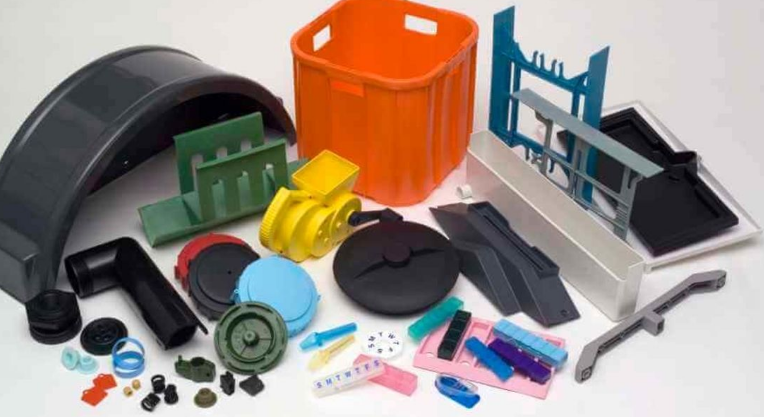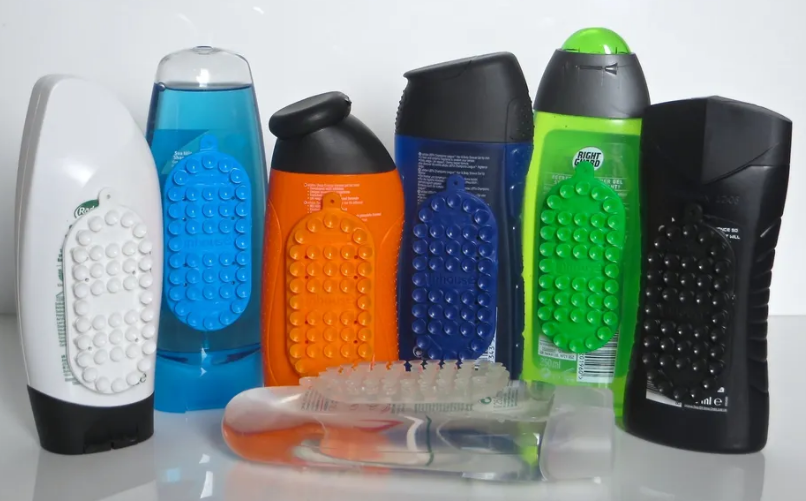Injection-molded items can be identified by parting lines, ejector pin marks, and a uniform, often glossy finish typical of the process.
Identifying Injection Molded Products
Recognizing injection molded products involves understanding specific visual and textural characteristics unique to this manufacturing process. These indicators can help differentiate injection molded items from those produced by other methods.

Visual Indicators of Injection Molding
Distinctive features include:
Parting Lines: Visible lines where mold halves meet. They are usually fine and can be more pronounced on complex shapes.
Ejector Pin Marks: Small round marks where ejector pins push the part out of the mold.
Gate Marks: Where molten plastic enters the mold, often seen as small nubs or tabs on the product.
Weld Lines: Lines that form where molten plastic flows meet inside the mold. They indicate the flow path of the plastic.
Textural Characteristics Unique to Injection Molded Items
Injection molding imparts specific textures:
Consistent Surface Finish: Injection molding provides a uniform surface finish, often with a high level of glossiness.
Texture Application: Specific textures, like matte or leather-like finishes, are directly molded into the product.
Residue-Free Surface: Unlike some other processes, injection molding rarely leaves residue or fibers on the product surface.
Efficiency and Cost Factors:
Speed of Production: Injection molding is efficient, capable of producing parts in seconds to minutes.
Material Efficiency: This process minimizes waste, using only the required amount of plastic.
Tooling Costs: While initial tooling can be expensive, the per-unit cost is low for high volume production.
For further reading on the characteristics of injection molded products, visit Injection Molding on Wikipedia.
Technical Aspects of Injection Molded Products
The technical aspects of injection molded products encompass the materials used and the specifics of the injection molding process, which significantly influence the final product’s features and quality.
Common Materials Used in Injection Molding
Key polymers and their properties:
Acrylonitrile Butadiene Styrene (ABS): Known for toughness and impact resistance. Widely used for automotive parts, toys, and housings.
Polycarbonate (PC): Offers high strength and heat resistance, ideal for medical devices, automotive components, and protective gear.
Polypropylene (PP): Lightweight and resistant to chemicals, used in containers, automotive parts, and textiles.
Polyethylene (PE): Diverse applications due to its flexibility, strength, and recyclability. Common in packaging, piping, and toys.
Nylon (Polyamide): Durable and heat-resistant, used in gears, bearings, and automotive parts.
Cost and Production Efficiency:
Material Costs: Vary from $0.90 to $3.50 per pound depending on the polymer.
Production Speed: Injection molding machines can produce parts in a matter of seconds, enhancing productivity.
Understanding the Injection Molding Process and Its Impact on Product Features
Process Overview:
Melting: Plastic pellets are melted in the injection molding machine.
Injection: The molten plastic is injected into a mold at high pressure.
Cooling: The plastic cools and solidifies into the final shape.
Ejection: The solid part is ejected from the mold.
Impact on Product Features:
Precision and Complexity: Allows for the production of complex shapes with high precision.
Surface Finish: Capable of producing parts with excellent surface finish and detail.
Strength and Durability: Injection molding ensures uniformity in material distribution, enhancing strength.
Machine Power Usage:
Energy Consumption: Modern machines are energy efficient, with power usage depending on size and complexity, typically ranging from 15 kW to 50 kW.
For an in-depth understanding of injection molding, refer to Injection Molding Process on Wikipedia.
Distinguishing Injection Molded Products from Other Manufacturing Methods
Differentiating injection molded products from those made with other plastic forming techniques involves understanding the unique characteristics each method imparts. The table below highlights key comparisons and differences in finish and detailing.
Comparison with Other Plastic Forming Techniques
| Manufacturing Method | Description | Key Differences from Injection Molding |
|---|---|---|
| Blow Molding | Used for making hollow plastic parts, like bottles. | Finish: Often has thinner walls and uneven thickness. Speed: Slower due to the two-step process (injection then blowing). |
| Extrusion | Continuous process for creating long, straight plastic parts. | Finish: Limited to uniform cross-sectional shapes. Versatility: Less versatile in shape complexity compared to injection molding. |
| Rotational Molding | Produces large hollow parts by rotating a heated mold. | Finish: Thicker walls, often with more design limitations. Cost: Generally lower tooling costs but higher per-piece cost. |
| Thermoforming | Involves heating a plastic sheet and forming it over a mold. | Finish: Limited detail and less precise control over thickness. Applications: Typically used for larger, less complex parts. |
Key Differences in Finish and Detailing
| Feature | Injection Molding | Other Techniques |
|---|---|---|
| Precision | High precision in dimensions and complex geometries. | Generally less precise, especially in complex shapes. |
| Surface Finish | Can achieve a high-quality surface finish with various textures. | Finish is often less refined and may require additional processing. |
| Strength | Uniform material distribution, leading to consistent strength. | Strength may vary due to inconsistent material distribution. |
| Cost Efficiency | High upfront tooling cost, but very cost-effective for large volumes. | Other methods may have lower tooling costs but higher per-unit costs. |
| Production Speed | Rapid production cycles, ideal for high-volume manufacturing. | Varies, often slower, especially for complex parts. |
For more detailed comparisons, visit Plastic Forming Techniques on Wikipedia.
Analyzing Injection Molded Products
Analyzing injection molded products for quality and consistency involves a close examination of part lines, injection points, material consistency, and density. These aspects are critical in determining the overall quality and functionality of the final product.

Examining Part Lines and Injection Points
Part Lines:
Visibility: Part lines are where mold halves meet. Ideally, they should be minimal and unobtrusive.
Location: Strategic placement of part lines can affect product aesthetics and strength.
Injection Points:
Marks: Injection points are where the molten plastic enters the mold. They should be small and well-placed to avoid weakening the product.
Quality Indicator: Poorly executed injection points can lead to defects like sink marks or voids.
Investigating Material Consistency and Density
Material Consistency:
Uniformity: Consistent color and texture throughout the part indicate high-quality material management.
Flaws: Inconsistencies like discoloration or streaking may suggest issues in the plastic or the molding process.
Density:
Weight and Feel: Density affects the weight and structural integrity of the part.
Quality Control: Variations in density can imply inconsistent processing conditions or material quality.
Cost and Efficiency Considerations:
Material Usage: Efficient use of materials reduces cost and waste.
Production Speed: Consistent quality control enables faster production cycles and reduces the need for rework.
For further information and detailed analysis, visit Injection Molding Material on Wikipedia.




